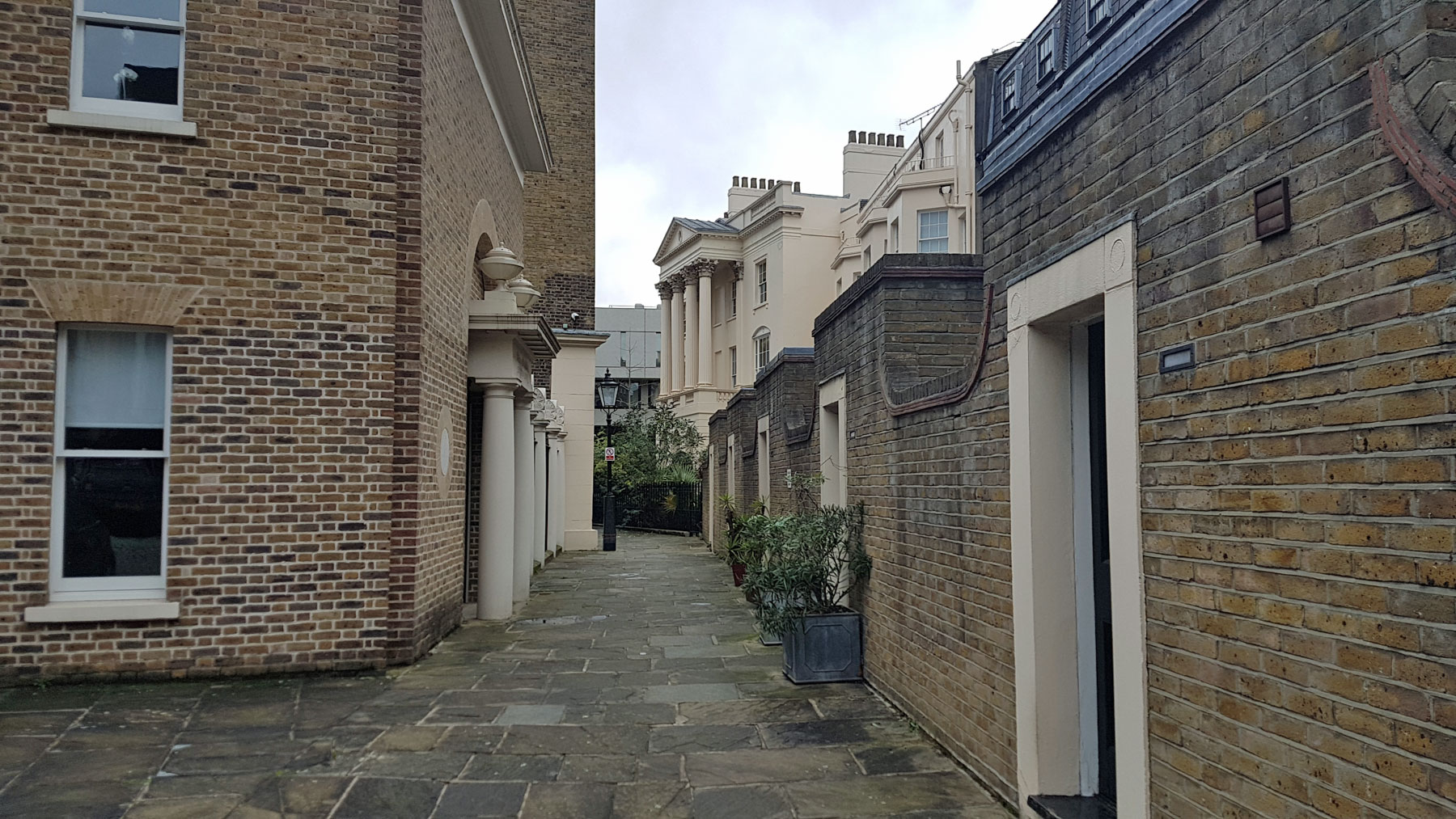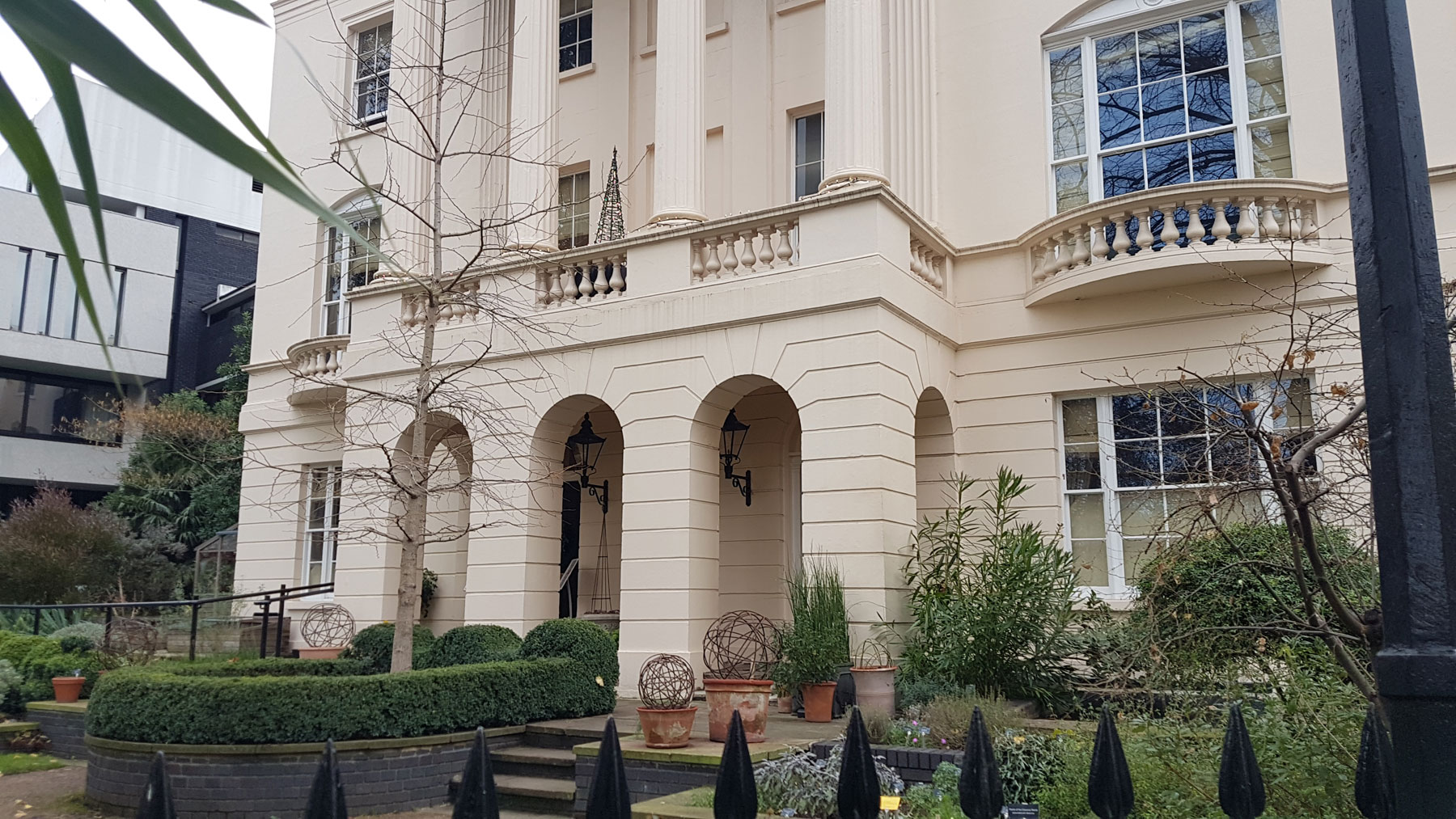This is a private looking cobbled* passage leading behind the grand frontages of the Regents Park buildings. The passage itself isn’t that notable, posh, clean and functional, but the buildings though, they tell a story.
Peto Place was originally known as Albany Place, and was laid out during the rebuilding of the area in the 1810s when Regents Park and the grand houses and roads in the area were laid out. The grand classical looking houses that back onto Peto Place were co-designed by A.C. Pugin, father of gothic revivalist and designer of the Houses of Parliament, Augustus Welby Pugin.
The area has an odd legislative quirk in that while it’s part of Camden, the maintenance of the streets in this area is not carried out by the council, but by the Crown Estate Paving Commission, which was set up as part of the creation of Regents Park to look after the local streets.
In this open space you can see a curious building poking out from the row of grand houses, and this is the back of the Diorama, an early concept for the modern cinema.
The Diorama presented two different scenes to the audience, with each scene formed by a series of suspended canvases that were approximately forty feet tall by eighty feet wide. They were partly translucent and painted with a scene. Natural light from windows behind and a ‘ground-glass roof’ was manipulated through the use of blinds behind, above and in front of the canvases to illuminate different parts of the canvases and create the illusion of moving scenes.
Hugely popular when it opened in 1823, it closed just 20 years later, a victim of its own success as many more improved rivals were built elsewhere.
The site was leased to at the time fabulously wealthy businessman (Sir) Samuel Peto in 1854 and he gutted the interior to turn it into a Baptist chapel which opened a year later.
It seems that it’s later in their occupancy that Albany Mews (as it was in 1888) was renamed as Peto Place – probably around the turn of the 19th century.
The chapel’s lease expired in 1922, and a few years later it was taken over by the Red Cross, for their Rheumatic Diseases hospital (later the Arthur Stanley Institute). Following the creation of the NHS, it became part of Middlesex Hospital, and they eventually moved out in 1964.
After that, it was variously used as a college, as offices and there have been numerous attempts to either demolish the building or convert the building into flats, usually refused as the Diorama, while hugely altered internally is the last surviving building of its type.
There are now fresh plans to convert it from institutional use into offices, retaining for once, the internal layout.
The modern building on the eastern side occupies a late site that was once the Albany Pantechnicon, a storage and safety deposit building. Today its modern offices facing into Peto Place, but retains the classic cream Georgian facade on the other side.
Further up is a subdued looking modern building — the Jewwood Medical Education Centre, opened by the Prince of Wales in 2002 — and it does look like the sort of building he would approve of. Very Poundbury.
A long narrow passage passes further along, with a warning sign that it’s a dead-end — to those who don’t have the key to the gate at the end — but it does give a good view of the back of William Harvey House, a very anonymous building from the front, but from here, looking considerably grander.
It’s currently a private hotel offering “affordable rooms” to members of the Royal College of Physicians.
*yes, I know they’re setts, but you know everyone calls them cobbles. They’re also new, as the passage had conventional street tarmac in the 1980s.













Great stuff, I love thes Alleys articles. They are a wonderful distraction from the current news situation!
Any chance you could add that strange road that disappears under a building at the bottom end of the Tottenham Court Road?
I’ve always found Stephen Street/Mews and Percy Mews to be oddly different and perhaps foreboding!